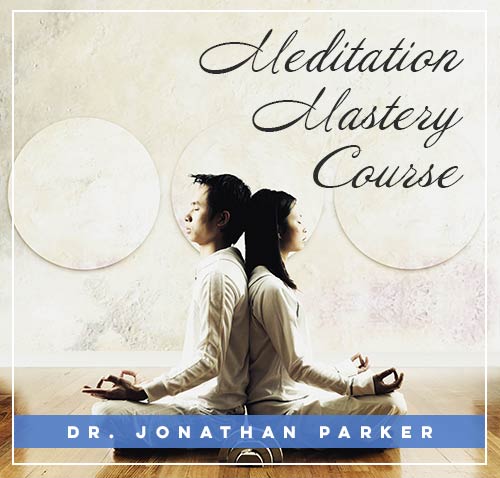Attaining Deep Stillness: Meditation Mastery

Looking for more amazing products? Check out our online store and explore our collection here! Happy shopping!
Before diving in, please note: This post is for informational purposes only. If you’d like to know more about how we approach topics, feel free to check out our friendly Disclaimer Page.
Hey there, amazing readers! 
We’re committed to delivering quality posts, and your support (even just sticking around despite the ads) means everything to us. So, bear with us, and thanks for helping us keep the good vibes rolling. Now, on to the fun stuff!
TRANSLATE BUTTON AT THE END OF THE ARTICLE
A Quick Overview
Meditation is a powerful tool that can help individuals attain deep stillness and inner peace.
Through consistent practice and mastery of meditation techniques, one can experience profound benefits on physical, mental, and emotional levels.
In this article, we will explore the various aspects of meditation mastery, including its benefits, the science behind it, techniques for deep stillness, overcoming challenges, creating the ideal environment, incorporating mindfulness, developing a routine, exploring advanced practices, harnessing the power of breath, cultivating inner peace, and sustaining stillness in everyday life.
Introduction: Understanding the Power of Meditation Mastery
Meditation has been practiced for centuries as a way to quiet the mind, reduce stress, and enhance overall well-being.
By attaining deep stillness through meditation, individuals can tap into a sense of inner calm and clarity that can positively impact every aspect of their lives.
Meditation mastery involves cultivating a state of focused awareness, where one can observe their thoughts and emotions without judgment, and ultimately transcend the limitations of the mind.
Benefits of Attaining Deep Stillness Through Meditation
Reduces stress and anxiety levels by promoting relaxation and calmness.
Improves focus, concentration, and cognitive function.
Enhances emotional regulation and resilience in dealing with challenges.
Boosts creativity and problem-solving abilities.
Strengthens immune system and overall physical health.
Promotes a sense of interconnectedness and compassion towards others.
Increases self-awareness and personal growth.
Enhances quality of sleep and overall well-being.
Helps in managing chronic pain and illness.
Promotes a sense of inner peace and contentment.
The Science Behind Achieving Deep Stillness
Research has shown that meditation can positively impact the brain and body in various ways.
When we meditate, the brain produces more alpha waves, which are associated with relaxation and a calm state of mind.
This leads to a decrease in the production of stress hormones such as cortisol, reducing overall stress levels.
Additionally, meditation has been found to increase gray matter in areas of the brain associated with memory, learning, and emotional regulation.
This neuroplasticity allows for greater mental flexibility and resilience in the face of challenges.
Techniques for Mastering Meditation for Deep Stillness
Focus on the breath: Concentrate on the sensation of the breath entering and leaving the body.
Body scan: Pay attention to each part of the body, releasing tension and promoting relaxation.
Mantra repetition: Repeat a word or phrase silently to focus the mind and create a sense of calm.
Visualization: Imagine a peaceful scene or object to evoke feelings of tranquility.
Loving-kindness meditation: Cultivate feelings of compassion and goodwill towards oneself and others.
Walking meditation: Practice mindfulness while walking, focusing on each step and breath.
Sound meditation: Listen to soothing sounds or music to enhance relaxation.
Progressive muscle relaxation: Tense and release various muscle groups to promote relaxation.
Guided meditation: Follow a recorded meditation to guide you through the process.
Open monitoring: Observe thoughts and emotions without attachment or judgment.
Overcoming Common Challenges in Meditation Practice
Some common challenges in meditation practice include:
Restlessness and distractions: Acknowledge distractions without judgment and gently bring the focus back to the breath.
Impatience and frustration: Accept that the mind wanders naturally and be patient with yourself.
Physical discomfort: Adjust your posture and use props for support if needed.
Lack of time: Start with short sessions and gradually increase the duration as you build consistency.
Doubt and resistance: Trust in the process and the benefits of meditation, even when progress seems slow.
Creating the Ideal Environment for Deep Stillness
To create an ideal environment for meditation and deep stillness, consider the following:
Find a quiet and comfortable space where you won’t be disturbed.
Dim the lights or use soft lighting to create a relaxed atmosphere.
Use cushions or a meditation bench for support and comfort.
Play soothing music or nature sounds to enhance the ambiance.
Burn incense or use essential oils for aromatherapy.
Keep your phone and other distractions out of reach.
Set a timer to avoid clock-watching.
Consider meditating outdoors in nature for a peaceful experience.
Create a dedicated meditation corner or altar for a sacred space.
Make your environment conducive to relaxation and introspection.
Incorporating Mindfulness into Your Meditation Practice
Mindfulness is the practice of being fully present and aware in the moment, without judgment.
By incorporating mindfulness into your meditation practice, you can deepen your sense of stillness and awareness.
Focus on the sensations of the present moment, such as the breath, sounds, or body sensations.
Notice any thoughts or emotions that arise without getting caught up in them.
This practice of non-judgmental awareness can help cultivate a sense of inner peace and acceptance.
Developing a Consistent Meditation Routine for Mastery
To develop a consistent meditation routine, consider the following tips:
Set aside a specific time each day for meditation.
Start with short sessions and gradually increase the duration.
Choose a meditation technique that resonates with you.
Create a comfortable and inviting meditation space.
Use reminders or cues to prompt your meditation practice.
Be patient and compassionate with yourself, especially on days when meditation feels challenging.
Keep a meditation journal to track your progress and insights.
Seek guidance from a meditation teacher or community for support and accountability.
Experiment with different techniques and styles to find what works best for you.
Stay committed to your practice, even when it feels difficult or unproductive.
Exploring Advanced Meditation Practices for Deep Stillness
Advanced meditation practices can deepen your sense of stillness and awareness.
Some advanced techniques to explore include:
Transcendental meditation: Repeating a personalized mantra to access deeper states of consciousness.
Vipassana meditation: Observing the impermanence of sensations and thoughts to cultivate insight and wisdom.
Yoga nidra: A guided meditation practice that induces deep relaxation and inner awareness.
Kundalini meditation: Harnessing the energy of the body through breathwork and movement.
Zen meditation: Sitting in silence and stillness to cultivate presence and mindfulness.
Chakra meditation: Balancing and activating the energy centers of the body for harmonious well-being.
Sound healing: Using sound vibrations to induce deep states of relaxation and inner stillness.
Qi gong meditation: Combining breathwork, movement, and visualization for holistic well-being.
Guided imagery: Using visualization to evoke positive emotions and inner peace.
Mindful eating: Bringing awareness to the sensations and experience of eating to cultivate mindfulness in everyday life.
Harnessing the Power of Breath in Meditation Mastery
The breath is a powerful anchor for meditation practice, as it connects the mind and body in the present moment.
By focusing on the breath, you can cultivate a sense of stillness and awareness.
Techniques for harnessing the power of breath in meditation mastery include:
Deep diaphragmatic breathing: Inhale deeply through the nose, expanding the belly, and exhale slowly through the mouth, releasing tension.
Box breathing: Inhale for a count of four, hold for four, exhale for four, and hold for four, creating a square pattern of breath.
Alternate nostril breathing: Close one nostril with your finger, inhale through the other nostril, then switch and exhale through the opposite nostril.
Breath counting: Count each inhale and exhale up to a specific number, focusing the mind on the breath.
Ocean breath: Inhale and exhale audibly through the nose, creating a soothing sound like ocean waves.
Sama Vritti: Equalize the length of your inhales and exhales to create a sense of balance and harmony.
Breath awareness: Simply observe the natural rhythm of your breath without trying to control it.
Three-part breath: Inhale into the belly, then the chest, then the upper chest, and exhale in reverse order, promoting full, deep breathing.
Breath retention: Hold the breath at the top of the inhale or bottom of the exhale to build mental focus and energy.
Sighing breath: Exhale audibly with a sighing sound to release tension and stress from the body.
Cultivating Inner Peace and Tranquility Through Meditation
To cultivate inner peace and tranquility through meditation, focus on cultivating qualities such as:
Compassion: Practice loving-kindness meditation to develop feelings of goodwill and compassion towards oneself and others.
Acceptance: Embrace the present moment as it is, without resistance or judgment.
Forgiveness: Release anger and resentment towards oneself and others through forgiveness meditation.
Gratitude: Cultivate a sense of gratitude for the blessings and lessons in your life.
Equanimity: Develop a sense of balance and equanimity towards the ups and downs of life.
Presence: Be fully present and aware in each moment, without getting caught up in past regrets or future worries.
Patience: Cultivate patience and acceptance for the natural unfolding of life’s events.
Joy: Cultivate feelings of joy and contentment through meditation and mindfulness practices.
Clarity: Develop mental clarity and insight through meditation techniques such as vipassana and mindfulness.
Connection: Cultivate a sense of interconnectedness with all beings and the universe, fostering feelings of unity and oneness.
Sustaining Deep Stillness in Everyday Life: Tips and Strategies
To sustain deep stillness in everyday life, consider the following tips and strategies:
Practice mindfulness throughout the day, bringing awareness to your thoughts, emotions, and actions.
Take regular breaks to pause, breathe, and center yourself in the present moment.
Use mindful eating practices to savor and appreciate each bite of food.
Engage in daily self-care practices such as yoga, exercise, or nature walks to promote inner balance.
Set boundaries and prioritize activities that nourish your mind, body, and soul.
Cultivate a daily gratitude practice to foster feelings of contentment and appreciation.
Connect with others through acts of kindness and compassion, fostering a sense of community and support.
Practice deep breathing techniques to calm the nervous system and reduce stress.
Reflect on your values and intentions to guide your actions and decisions in alignment with your deepest desires.
Seek support from a meditation teacher, therapist, or community to deepen your practice and sustain stillness in everyday life.
Conclusion
Attaining deep stillness through meditation mastery is a transformative journey that can bring profound benefits to your physical, mental, and emotional well-being.
By understanding the power of meditation, exploring techniques for deep stillness, overcoming challenges, creating an ideal environment, incorporating mindfulness, developing a routine, exploring advanced practices, harnessing the power of breath, cultivating inner peace, and sustaining stillness in everyday life, you can experience a sense of inner calm, clarity, and contentment that permeates every aspect of your life.
Consistent practice and dedication to mastering meditation can lead to a profound sense of well-being and inner peace that radiates throughout your daily experiences.

The Enlightenment Journey is a remarkable collection of writings authored by a distinguished group of experts in the fields of spirituality, new age, and esoteric knowledge.
This anthology features a diverse assembly of well-experienced authors who bring their profound insights and credible perspectives to the forefront.
Each contributor possesses a wealth of knowledge and wisdom, making them authorities in their respective domains.
Together, they offer readers a transformative journey into the realms of spiritual growth, self-discovery, and esoteric enlightenment.
The Enlightenment Journey is a testament to the collective expertise of these luminaries, providing readers with a rich tapestry of ideas and information to illuminate their spiritual path.
Our Diverse Expertise
While our primary focus is on spirituality and esotericism, we are equally passionate about exploring a wide range of other topics and niches 

To ensure we provide the most accurate and valuable insights, we collaborate with trusted experts in their respective domains 
Our blog originally focused on spirituality and metaphysics, but we’ve since expanded to cover a wide range of niches. Don’t worry—we continue to publish a lot of articles on spirituality! Frequently visit our blog to explore our diverse content and stay tuned for more insightful reads.
Hey there, amazing reader! 
Check out our store here and take a peek at some of our featured products below! Thanks for being awesome!














